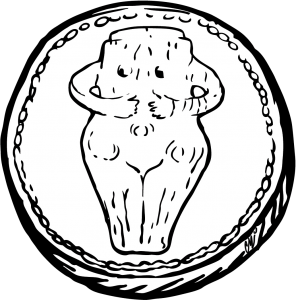
April 27th 2017 marks the anniversary of 45 years since the opening of the Old Princely Court Museum. Set up in the vestiges of the Bucharest Princely Court, the official residence of Wallachian rulers, the Old Princely Court Museum presents historic testimonies of great importance for learning the history of Bucharest.
The founding of the museum represented the result of assiduous work, conducted by a multi-disciplinary team formed by archaeologists, architects and engineers, who, during the 60s and 70s of the previous century, helped clarify controversial moments concerning how Bucharest formed as a city.
In the context of a lack of interest in conducting solid, systematic archaeological campaigns on the territory of Bucharest towards the end of the 19th and the beginning of the 20th century, a series of historical episodes concerning the Capital remained unclarified, including the way the Princely Court came to be. Some data happened to be obtained during the restoration work done on the Old Princely Court Church, a process that took place between 1928 and 1933, thanks to the Historical Monuments Commission. The restoration works brought to light the remains of the Princely Palace eastern wing, of the bathhouse built by Constantin Brâncoveanu and led to a more precise outlining of the stages during which the place of worship founded by Mircea Ciobanul (Mircea the Shepherd), during the mid-16th century, functioned.
This data, obtained in the 3rd and 4th decades of the 20th century, when the former Princely Court perimeter was occupied by stores and private properties, which hindered the extension of archaeological research in this area, were insufficient for understanding the early period of the princely residence of Bucharest. This is why, when localising the fortified city of the time of Vlad the Impaler, which is mentioned in the September 20th 1459 document, several hypotheses emerged, placing it either on the Radu Vodă hillock, or on the Mihai Vodă hill. The existence of this fortified city on the land occupied by the Princely Court was denied by a certain category of historians, who did not admit that the city could have been built on flat grounds, exposed to attacks on the northern and western sides. Another reason brought up was the lack of material traces that would prove the existence of a medieval fortress in the area.
However, the opinion of those who refused to accept the existence of Vlad the Impaler’s fortified city on the territory of the former Princely Court did not take into account two important aspects: on one hand, the topographic transformation undergone by the city-centre during the almost five centuries passed, between 1459 and the first half of the 20th century, including the disappearance of deep, steep waterfronts and swampy areas, and on the other hand, the lack of archaeological research for a large area of Bucharest’s centre, a process which could have shed light on the possibility that Vlad the Impaler’s fortress was located on the Princely Court lands.
In 1953 the Bucharest Archaeological Excavation Project was founded, coordinated by the Romanian Academy. The project wished to clarify controversial aspects of Bucharest’s history, from its earliest form to the contemporary period. This event was an auspicious one for researchers interested in the founding of the city and in localising Vlad the Impaler’s fortress, as it began an intense archaeological research campaign focusing on the Radu Vodă and Mihai Vodă hills, as well as the area around the Princely Court Church.
The first results following excavations around the Princely Court Church were obtained rapidly, as vestiges from the 15th-18th centuries were uncovered, spanning over a quite large period of time. While the land near the princely church founded by Mircea the Shepherd was researched, excavation work also began on the Franceză, Soarelui and Șepcari Streets, bringing to light an interesting fact: remains of old walls were found between the walls of buildings standing at that time. This opened up new research horizons for specialists, allowing the elaboration of several working hypotheses and also imposing the extension of the research area, thus reaching the buildings of the Franceză and Soarelui Streets.
The discovery made in the cellar of the building at No.10 Soarelui Street (which still stands today) was a veritable surprise: it was here that a fragment of the walls composing the underground levels of the Princely Court at the time of Mircea the Shepherd was found. One could name this the crowning achievement of the research campaign started in 1953, as well as the discovery that began the process of identifying and uncovering the vestiges of the 14th century fortified city, Vlad the Impaler’s fortress and the Princely Palace. In concordance with the legislation in place at the time, it was decided that the buildings constructed atop this valuable treasure were to be demolished, and the building owners would be compensated accordingly.
As the territory occupied by the Princely Court was freed of other buildings, other vestiges were uncovered, such as a column from the loggia dating from Constantin Brâncoveanu’s time, fragments from the walls that formed the Saint John the Baptist Chapel and the corridor that linked the Princely Court Church and the Princely Palace.
These discoveries, essential for revealing Bucharest’s history, were valued and made available to the public through the founding of the Old Princely Court Museum.
A special mention and homage must be brought to the scientific collective, composed of Panait I. Panait, Aristide Ștefănescu, Dinu V. Rosetti, Gheorghe Astancăi, Mihai Sânpetru, Letiția Ionescu-Lăzărescu and Constantin Căzănișteanu, who led the archaeological research at the Princely Court and restored to Bucharest a significant part of the city’s heritage.
Gabriel Stelian Constantin


